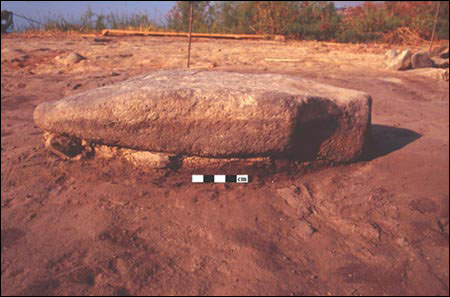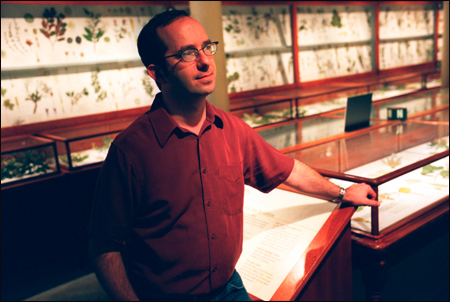Researchers find earliest known oven
New find in Israel shows that cereal production predates agricultural societies by millennia

Archaeologists have found strong evidence that wheat and barley were refined into cereals 23,000 years ago, suggesting that humans were processing grains long before hunter-gatherer societies developed agriculture. The findings, including the identification of the earliest known oven and hence the oldest evidence of baking, were described in a recent issue of the journal Nature.
“This is an observation of key progress in human society, as the beginning of baking was likely a major step forward in nutrition,” says author Ehud Weiss, a postdoctoral researcher in Harvard University’s Department of Anthropology and Peabody Museum. “Our work also provides evidence that ancient people held important knowledge that survives to this day. Ten thousand years before agriculture developed, humans recognized the value of cereals.”

Weiss and colleagues from the Smithsonian Institution and University of Haifa found evidence of ancient cereal production at a site called Ohalo II, located in present-day Israel and known from previous research to be 23,000 years old.
Within the remains of a hut at this site, Weiss and his colleagues found 150 starch granules buried in crevices in a footlong stone apparently used to grind grains. Comprehensive studies of these starch molecules revealed that more than half were from the family that includes barley and wheat. No starches from roots or tubers were found lodged in the stone, suggesting it was used only as a cereal-processing implement.
Several meters away, the archaeologists found a special alignment of burned stones, similar to hearthlike ovens used by recent and modern nomads and hunter-gatherers. This blackened area was covered with a mixture of ashes and barley grains, suggesting that dough made from grain flour was baked there.

The work by Weiss and colleagues provides some of the first empirical data on old and important problems in Old World archaeology. It sheds light on two issues central to the transition from foraging to food production: when humans began to routinely exploit wild varieties of wheat and barley and when they first developed technologies to pound and grind the hard, fibrous seeds of these and other plants into digestible foodstuffs.
Weiss’ co-authors on the Nature paper are Dolores R. Piperno and Irene Holst of the Smithsonian Institution and Dani Nadel of the University of Haifa.




